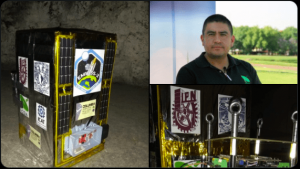TENOSIQUE, Mexico — Carlos Mejia sleeps on a bare mattress in an otherwise unfurnished room with his girlfriend and spreads a sheet on the cool tile for their two young children, a small respite from the sweltering heat. Their neighbors on both sides are Hondurans like them.
He earns $8 a day working 12 hours slicing plastic bottles to put into a compactor, enough to pay the electricity and water and buy some food. But the U.N. refugee agency picks up the rent and that of a growing number of immigrant families in this Mexican city of 32,000 people near the Guatemalan border.
Mejia is among more than 8,000 immigrants expected to seek asylum this year from Mexico, the majority fleeing gang violence in Honduras and El Salvador and to a lesser extent Guatemala. The exodus is turning southern Mexico towns like Tenosique as well as Palenque and Tapachula in neighboring Chiapas state into informal refugee camps.
The decision to settle in Mexico and not continue to the United States is tied to increased recognition of the risks of crossing Mexico and more recently the hostile rhetoric of U.S. President-elect Donald Trump, the immigrants and their advocates say.
The number of those seeking asylum in Mexico this year is more than double the 3,423 applicants last year — itself a 65 percent increase from 2014. Applications have risen by about 9 percent each month this year, says the United Nations High Commission for Refugees, or UNHCR.
According to the Mexican Commission for Refugee Aid, or COMAR, about 4,000 of the 6,898 applications it received through October this year made it to the end of the process and of those, 2,162 applicants got refugee status. Another 414 applicants who did not qualify as refugees received other kinds of government protection and escaped deportation.
More migrants are seeking asylum as information about the possibility spreads, said Rafael Zavala, director of the UNHCR office that opened here a year ago as the number of Central Americans seeking protection rose.
“We expect this year’s trend of people seeking protection here in Mexico to continue,” he said.
Mejia, 27, and his girlfriend Saimi Julio, 19, surrendered in October to Mexican immigration authorities at the El Ceibo border crossing, along with their two-year-old daughter and three-year-old son. They spent 26 days separated in immigration detention before being released to the migrant shelter here.
The couple had applied for asylum as well as a permit letting them seek work, so they only spent a week at the shelter before getting their room with the U.N. agency’s help. It took Mejia another month to find a job.
A response to their asylum requests could take up to three months. Applicants cannot leave the area in the meantime, each week signing in at the local immigration office. If amnesty is denied, they can appeal and continue waiting.
Mejia said he never considered going to the United States.
“It’s hard to go to the U.S.,” he said sitting on the stoop outside his room. “You risk a lot of violence, so much crime along the way.”
The number of asylum applicants remains a fraction of the overall flow. More than 400,000 immigrants — mostly Central Americans — were apprehended along the U.S. southwestern border during the fiscal year that ended in September.
But everything signals migrants are increasingly seeking asylum.
There is a precedent. In the 1980s and 1990s, Mexico took in more than 40,000 Guatemalans fleeing their country’s civil war.
There is no sign Central America’s current violence is letting up. El Salvador’s homicide rate last year was 103 killings for every 100,000 residents, making it the most deadly country not at open war.
Honduras had 64 killings per 100,000 people in 2015. Two of Mejia’s brothers were killed last year in a robbery and he received threats in their homeland.
Tenosique neighborhoods now teem with Hondurans. Narrow passageways lead to rows of rooms housing families.
Wendy Jiménez and her family met Mejia and Julio in Tenosique. They fled Honduras after her husband, Ángel Castellón, refused to sell drugs for gang members who retaliated by setting fire to their home.
A large, twisting scar covers Castellón’s upper arm and their two-year-old daughter has burn scars on her legs and chest. Jiménez earlier lost an uncle and a brother in the country’s violence.
Jiménez and her family made it to Nuevo Laredo, Mexico, across the border from Texas on a previous trip. But they were eventually deported back to Honduras. The day after they arrived, they left again.
“Our idea was the United States, but with the situation as it is, I don’t think we can go to the United States,” Jiménez said, referring to Trump’s vows to deport millions of immigrants in the U.S. illegally. They heard about the possibility of asylum in Mexico, and on this journey they applied.
In a written response to questions, COMAR said that in September it signed a cooperation agreement with UNHCR, under which the Mexican entity is hiring more staff to keep up with increasing applications.
Tomás González Castillo, a friar who founded the migrant shelter in Tenosique, said he has seen changes since it opened a few years ago.
There are more Central American families in Tenosique and they stay longer, unlike earlier waves that rested briefly and continued north. The number of visitors through the shelter is up by about a third this year.
“It is an obligatory migration, forced by the generalized violence,” González said. “It is a terrible decomposition of the social fabric.”
The U.N. is laying groundwork for more asylum seekers to stay in Tenosique and “avoid in the future any type of feeling of rejection toward the people who are arriving,” said Zavala, head of the refugee agency’s local office.
The agency has worked with city officials to open a gym and otherwise bring together local youth and their migrant peers, “so the foreigner won’t become a threat, but rather an acquaintance.”










